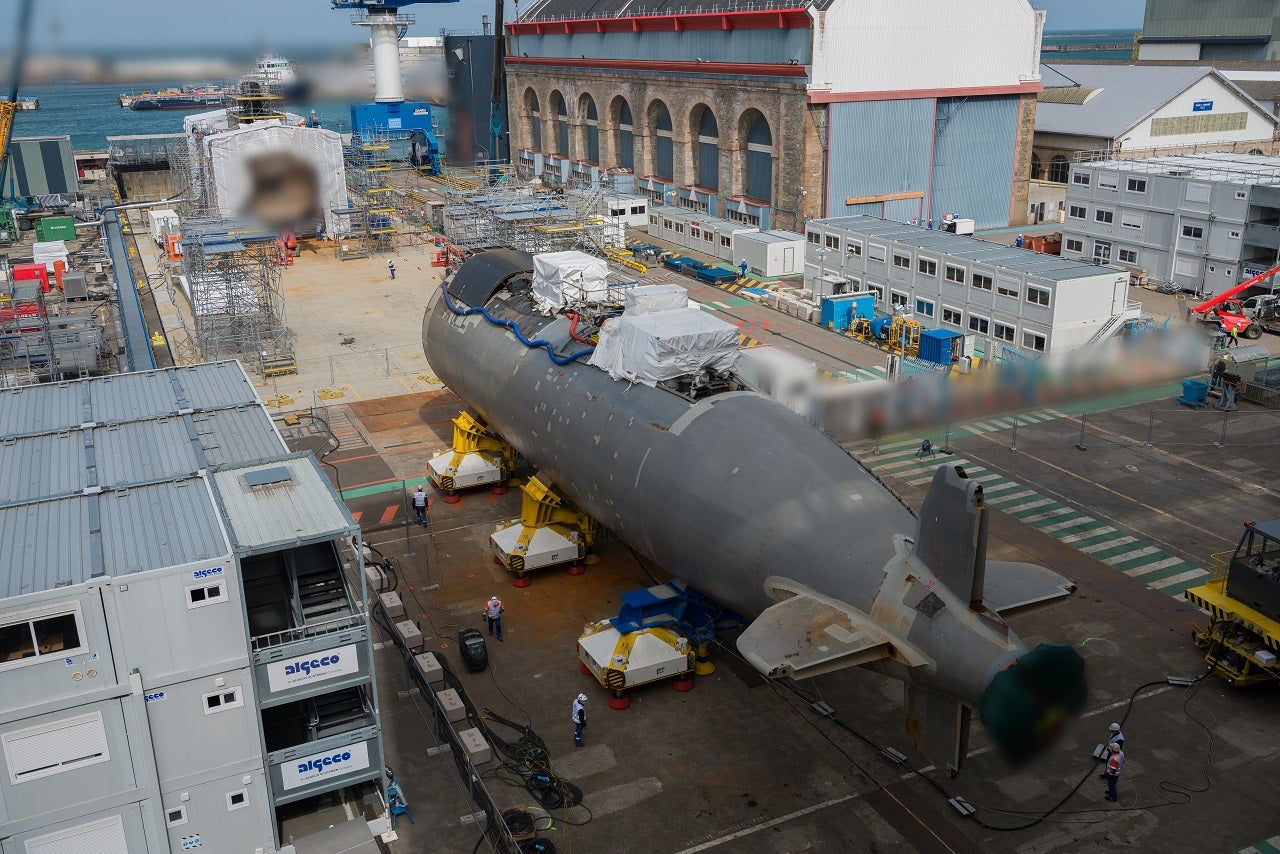
In 2020, a fire ripped through French Navy submarine FS Perle. To repair the boat, France’s Naval Group is joining the aft of the Perle to the front of her sister submarine Saphir. Harry Lye speaks to the company about how the complex repairs are being completed.
The Rubis-class nuclear submarine FS Perle was undergoing maintenance in drydock at the Marine Nationale (French Navy) main base in Toulon when a fire broke out on 12 June 2020. It blazed for 30 hours, leaving damage so severe it took experts until October 2020 to determine if repairs would be feasible.
The repair work will involve grafting the front end of HMS Perle’s decommissioned sister submarine Saphir to the damaged boat, the first time this operation has been carried out. It will take 300 people and six months to complete. Naval Group explains what this will involve.
Harry Lye: What makes Naval Group well suited to complete the repairs of the Perle?
Naval Group: Naval Group’s added value is to master this innovative repair process.
Indeed, for the first time, the repair of a submarine is made by hybridisation with the front of the [nuclear attack submarine] SSN Saphir added to the back of the SSN Perle. This is a world-first for the repair of a submarine, but Naval Group has mastered the complexity of the several industrial operations composing this innovative process.
Naval Group has already carried out this type of complex operation in the past. This is a succession of cutting, welding and connection tasks already carried out by the teams of Naval Group and its partners.
The process capitalises on the expertise of each Naval Group site. For instance, the thick hull cutting and welding work is entrusted to the Cherbourg industrial site. For the Cherbourg team, cutting and joining are routine operations made every day on the site for the construction of new submarines.
The preparation of the cutting, the reconstruction of decks and internal partitions, as well as the in-service support, will be entrusted to Naval Group teams in Toulon who have the specific know-how to carry out these operations.
What are some of the key challenges for the project to overcome?
The repair of the Perle submarine constitutes an industrial challenge. The time constraint is important as the objective is to return to a situation in which the French Navy has six nuclear attack submarines functioning. What is at the stake is the deterrence strategy of the country. Therefore, this project is treated as a priority. We are committed to fulfilling our customer’s interests and we deploy all the means and skills necessary to deliver this submarine on time.
How important is retaining the ability to repair submarines that have received such extensive damage?
This is a large-scale project that mobilises skills and unique industrial know-how. It is a multi-site programme that draws on all of our industrial skills. Over 300 people are mobilised for over 100,000 hours of engineering work and 250,000 hours of industrial work.
The major overhaul during the periodic interruption for maintenance and repair (PIMR) of the SSN Perle corresponds to one million hours of work. All this industrial work can be carried out because there has been a long-standing willingness to retain and transmit these essential skills in Naval Group.
To reach this objective, Naval Group invests heavily in training its workers. For instance, we have an in-house welder’s school in Cherbourg to assist them in their ten-year training.
What is the timeline for the works to be completed and what key milestones can we expect to see this year as the repairs progress?
The repair programme for the Perle nuclear attack submarine is proceeding to plan. Indeed, several milestones have been reached. In December, the Perle was moved from Toulon to Cherbourg. In January, the Perle submarine was placed on the launching device. The Naval Group teams then prepared the cutting phase.
To do this, around 100 Naval Group employees from the Toulon site, mainly specialised in carrying out hull and dismantling work, were hosted in Cherbourg for several weeks. They were first tasked with dismantling the front part of SSN Saphir. At the same time, the Naval Group engineering teams from Toulon, Brest and Cherbourg mobilised to finalise the design and management studies of the changes required to carry out the repair work.
In March, a new milestone was reached with the preliminary reviews of the junction design. The two Ruby-class submarines, the Perle and the Safir, were cut out and then aligned. The junction between the front of the ex-Saphir and the rear of the Perle has been made.
In early June, the submarine left the launching device. The work of splicing the electrical cables will begin at the beginning of July, which corresponds to restoring more than 2,000 connections. The SNA will then be moved in the second half of the year to the Toulon naval base to complete its major overhaul. It is a large-scale operation that corresponds to over a million hours of industrial work. At the end of the sea trials, the submarine will be returning to the French Navy in the first semester of 2023.




